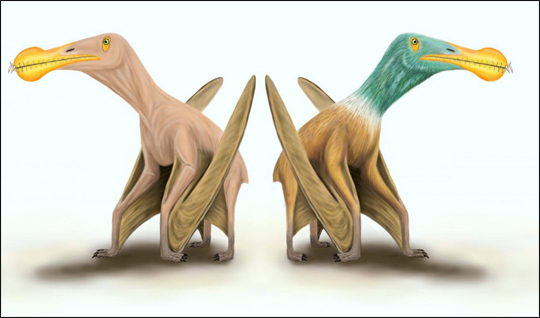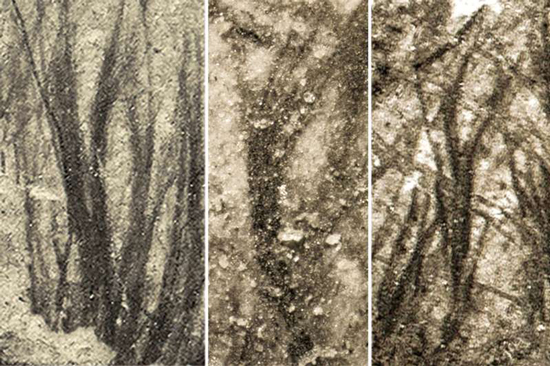Naked Pterosaurs – No Protofeathers on Pterosaurs
New Study Refutes the Idea of Protofeathers in the Pterosauria
A newly published study casts doubt on the idea that members of the Pterosauria had an integumentary covering of insulating protofeathers. Professor David Martill (University of Portsmouth), in collaboration with fellow flying reptile expert Dr David Unwin (University of Leicester), have reviewed the evidence and they propose that these vertebrates essentially lacked a feathery covering or indeed pycnofibres.
This research contradicts and refutes an earlier study published in the academic journal “Nature Ecology and Evolution” in 2018.
To read our article about the 2018 paper: Are the Feathers About to Fly in the Pterosauria?
Pterosaurs Uncovered – Lacking an Integumentary Covering
Picture credit: Megan Jacobs (University of Portsmouth)
Feather-like Branching Filaments
Dr Unwin and Professor Martill have challenged the findings of a research paper that examined the fossilised remains of two anurognathid pterosaurs which concluded that some of the structures preserved in association with the fossil bones were pycnofibres with characteristic features of feathers including non-vaned grouped filaments and bilaterally branched filaments. The 2018 paper implied that if pterosaurs as well as dinosaurs had feather-like body coverings, then this type of integumentary covering was deeply rooted in the Archosauria. This would suggest that the common ancestor of both the Pterosauria and the Dinosauria evolved this type of body covering.
If this interpretation of the fossil evidence is correct, then the very first feather-like elements evolved at least eighty million years earlier than currently thought. It would also suggest that all dinosaurs started out with feathers, or protofeathers but some groups, such as the Sauropoda, subsequently lost them again, the complete opposite of currently accepted theory.
Unwin and Martill challenge the interpretation of the material that featured in the 2018 paper. The propose that tiny, hair-like filaments reported by Yang et al (2018), are not protofeathers at all but tough fibres which form part of the internal structure of the pterosaur’s wing membrane, and that the “branching” effect may simply be the result of these fibres decaying and unravelling.
Dr Unwin from the University of Leicester’s Centre for Palaeobiology Research commented:
“The idea of feathered pterosaurs goes back to the nineteenth century but the fossil evidence was then and still is, very weak. Exceptional claims require exceptional evidence – we have the former, not the latter.”
Feather-like Filaments in Pterosaur Fossils
Picture credit: Yang, Jiang, McNamara et al
Considering Theories Related to the Pterosauria
Highlighting the difficulties of interpretating filament-like structures, Professor Martill commented that either way, palaeontologists have to take care when considering theories related to the Pterosauria, they have no extant equivalents so the reliance of fossil material is perhaps greater when compared to the Dinosauria with their close relatives the birds still very much with us.
Professor Martill observed:
“If they really did have feathers, how did that make them look and did they exhibit the same fantastic variety of colours exhibited by birds. And if they didn’t have feathers, then how did they keep warm at night, what limits did this have on their geographic range, did they stay away from colder northern climes as most reptiles do today. And how did they thermoregulate? The clues are so cryptic, that we are still a long way from working out just how these amazing animals worked”.
The scientific paper: “No protofeathers on pterosaurs” by David M. Unwin and David M. Martill published in Nature Ecology and Evolution.
The Everything Dinosaur website: Visit Everything Dinosaur.



